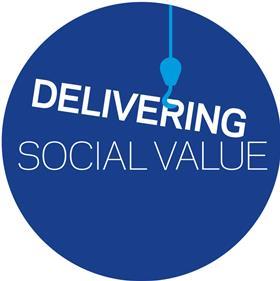Looking at loneliness in cities shows it is vital to create space where social connections can be made – and to do this, we need to listen

Woman’s Hour ran a special programme last week on loneliness. It was a fascinating conversation between a group of women who have been exploring the issue from different perspectives, including Baroness Barran, the minister for loneliness.
Bethan Harris, director at social enterprise Collectively, who has been partnering with Lendlease in delivering the Loneliness Lab, was another contributor. She described some of the work she has been doing to explore the relationship between place and loneliness.
It is extraordinary how the lab, a project looking at how to make London a less lonely place, is giving us powerful insights into experiences of loneliness. It is drawing attention to the way the design of our built environment can profoundly exacerbate disconnection and isolation for a wide spectrum of people.
We must not lose sight of the need to create environments that strengthen connections between people and the places they share
As designers and developers, we need to think much more deeply about what makes a good place to live and work. As we strive to create more dense cities that achieve a greater amount with less, we must not lose sight of the need to create environments that strengthen connections between people and the places they share.
It got me thinking about how placemaking is both an imprecisely understood word and an increasingly imperative requirement. We all agree roughly what it means and we all agree that we want it, but I do not think there is any consensus on what placemaking really is, other than a collaborative process involving multiple objectives, some of which might be physical, such as high-quality public realm, and others that might be less tangible, such as creating a sense of identity.
To me, placemaking means a deeper imperative that might start with good urban design but goes much further to create or enhance the relationship between people and place, building on the cultural and social patterns of daily life. At my most aspirational, I think it should contribute to people’s collective health and happiness, which is definitely worth striving for.
Does it establish a sound basis for the change people living there would consider worthwhile?
But so far, so idealistic. At this point I have to address the problematic context in which placemaking can be an intervention by the powerful (developers, investors, landowners, shareholders) into sites where the less powerful live. These tend to be places that are not the highly-prized conservation areas or the suburbs in which the former group tends to reside.
In this context, placemaking may be an admirable objective, but does it establish a sound basis for the change people living there would consider worthwhile? There should be no presumption over what makes a better place before there is a conversation with those who know that place best. It might be better to talk about quality of life rather than placemaking so that the conversation focuses on people’s lived experience and what does or does not work in their daily lives.
Thinking back to the Loneliness Lab, there was moving testimony by a young man who enjoyed his new job but had made no friends and found himself increasingly in despair. Or the carer looking after a husband who needed her constant attention but no longer remembered her, while she longed for a neighbour to drop by for a chat and cup of tea.

These stories are painful to hear, but they tell us so much about how we should be thinking about making places work. We should be concentrating on listening to people and creating places that pay attention to daily life, so residents can build and sustain connections with friends and neighbours.
The places where people bump into each other – the bin store, the bike shed, the lobby, the corner shop – these are the cornerstones of placemaking because they are where the social capital of a community is built and nurtured. But do we dedicate the attention to these places that they deserve?
Selling a lifestyle and creating a place that delivers a better quality of life in the longer term
Creating a sense of connectedness is not something a developer can do – it can only be built by people. We should learn to create the foundations for a community to start building connections, friendships and memories.
Let us be clear: as developers, we must make a distinction between creating a sense of place that is more about selling a lifestyle and creating a place that delivers a better quality of life in the longer term.
While both can have similar characteristics of investment in physical, social and cultural infrastructure alongside a strict adherence to a vision, the latter is much more difficult to achieve and requires more humility. Placemaking is not lifestyling. It can only be realised in collaboration over the long term with the people who live in that place.
Selena Mason is director of masterplanning at Lendlease



























No comments yet